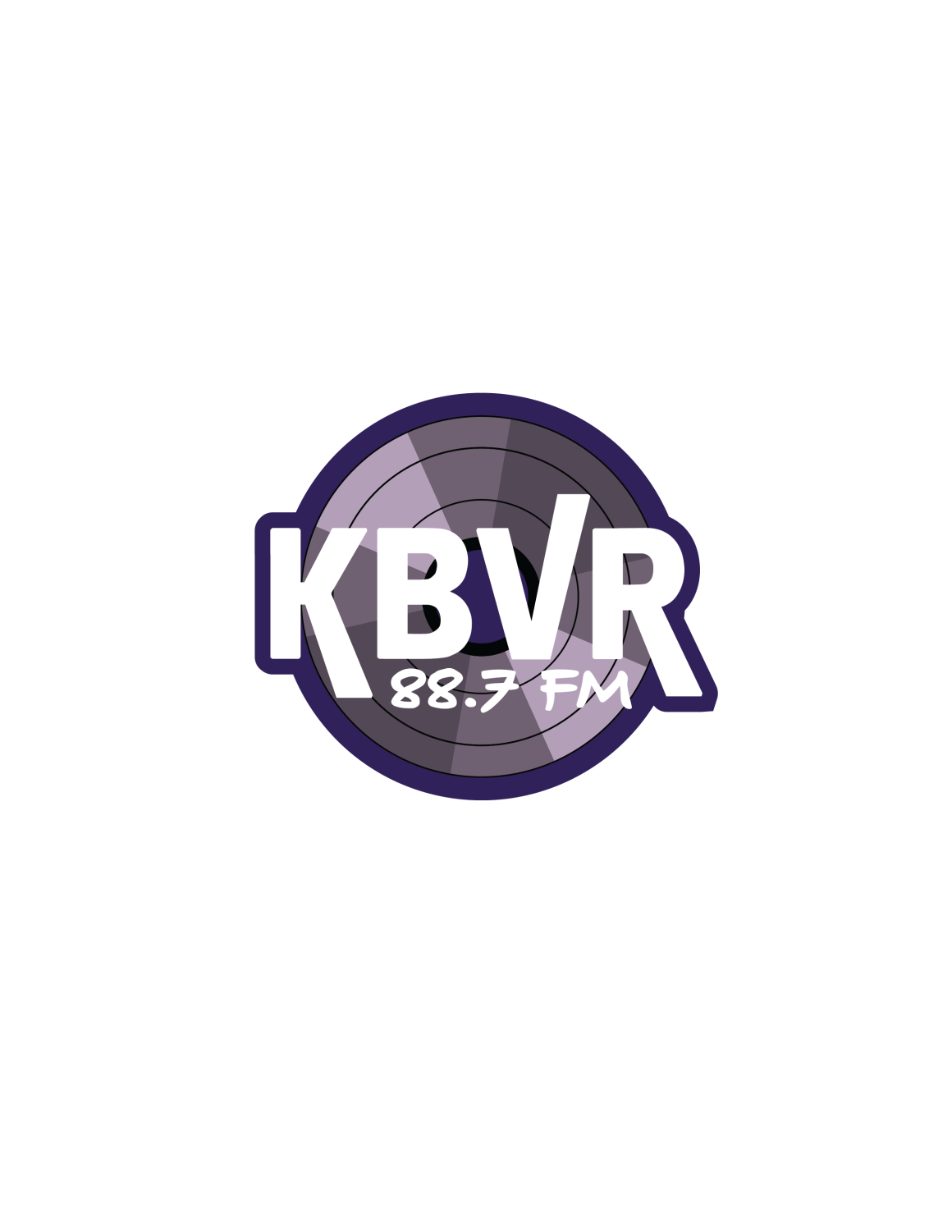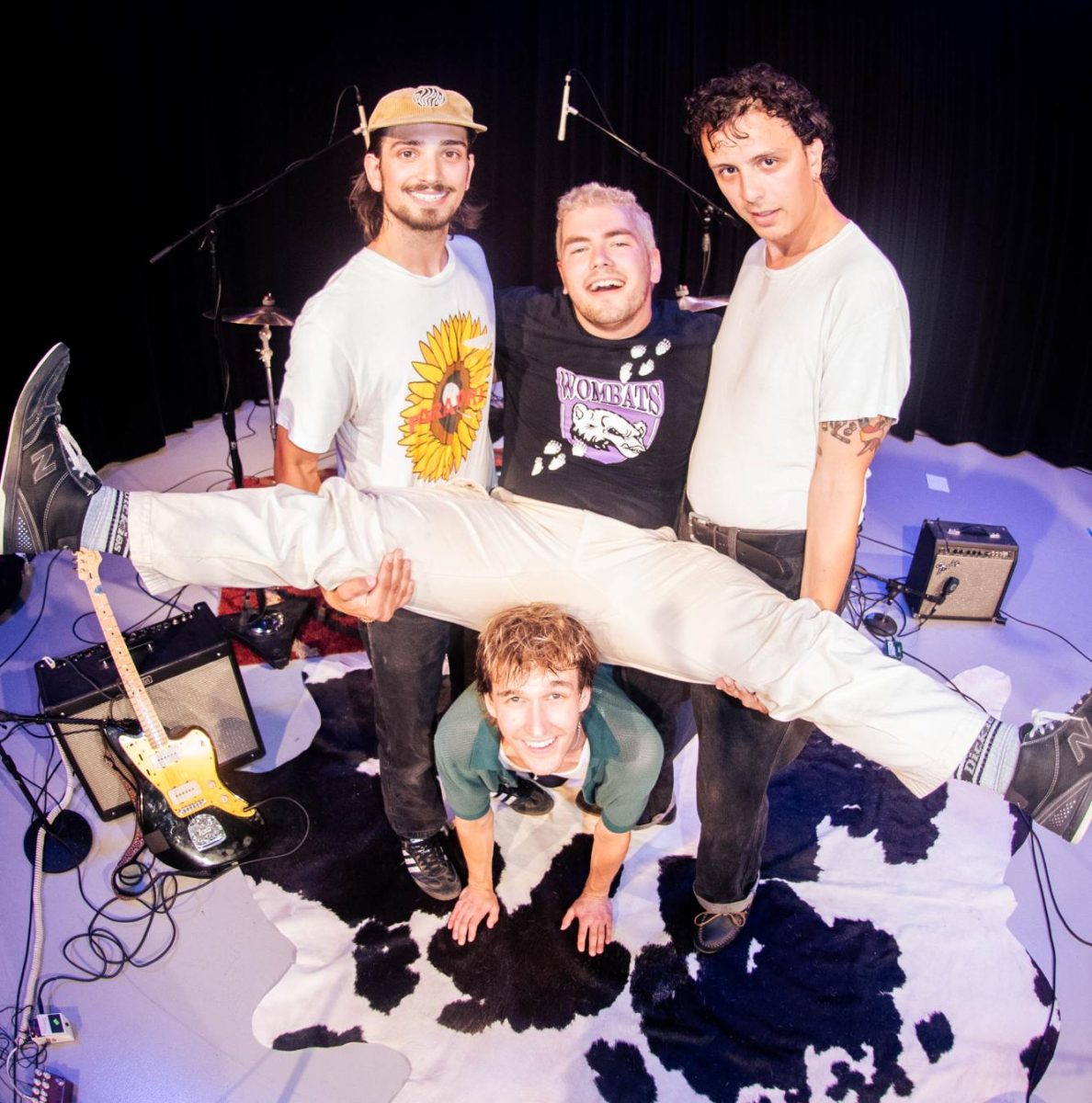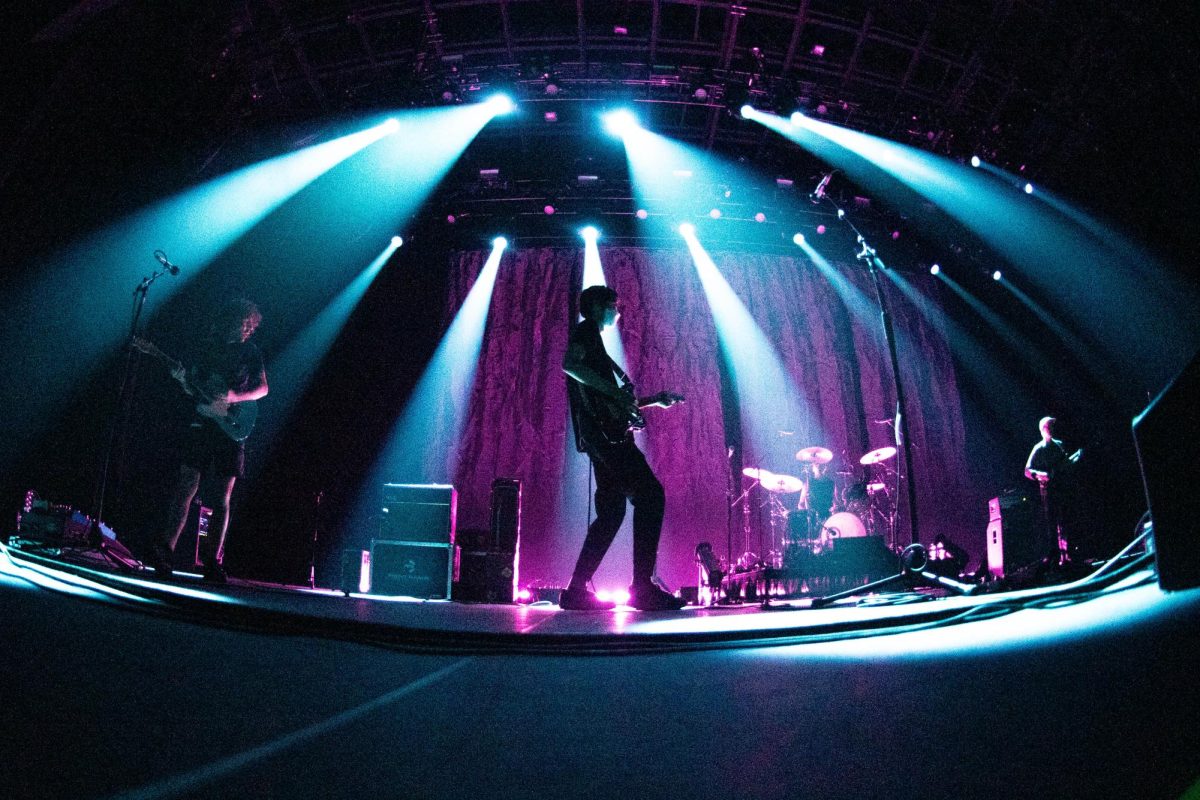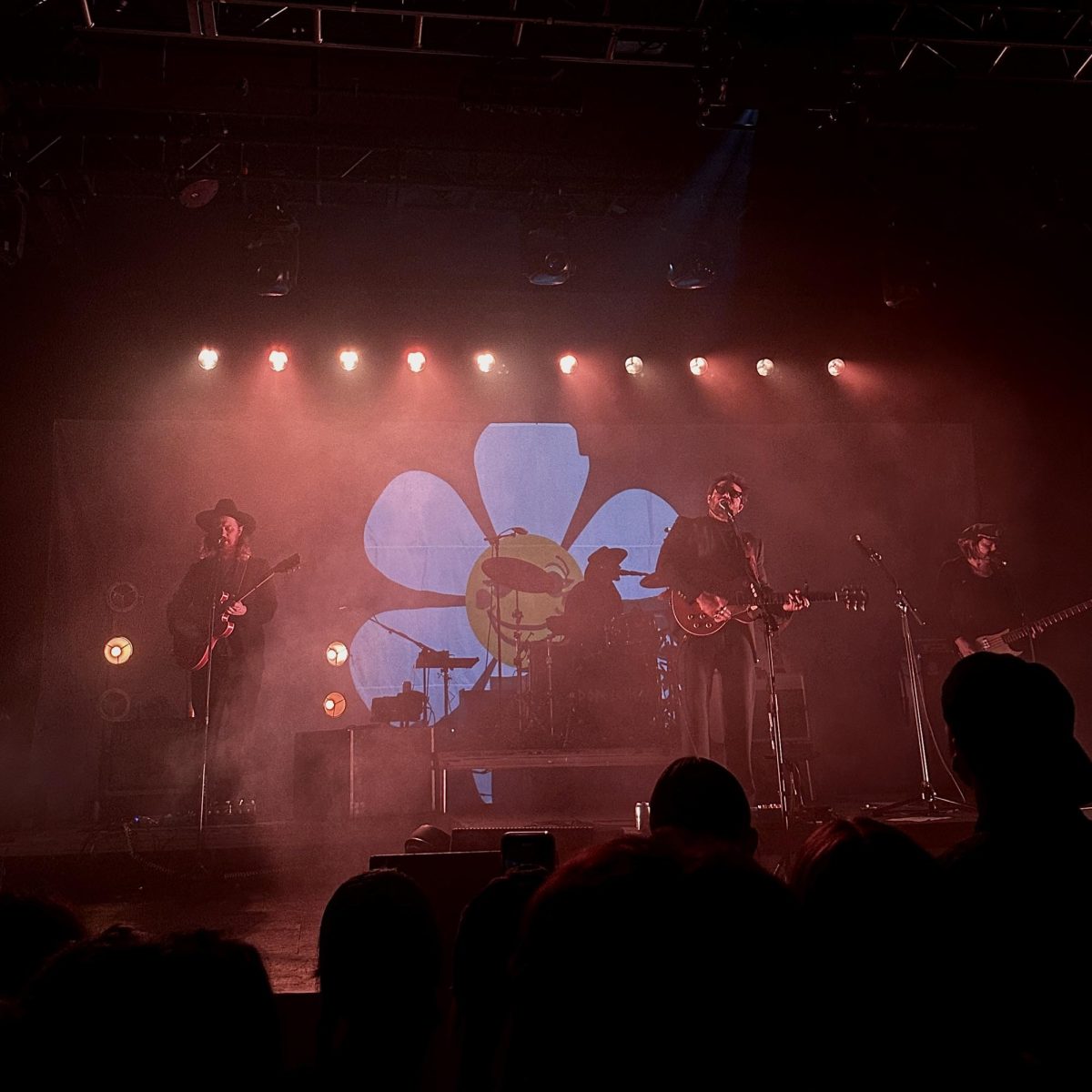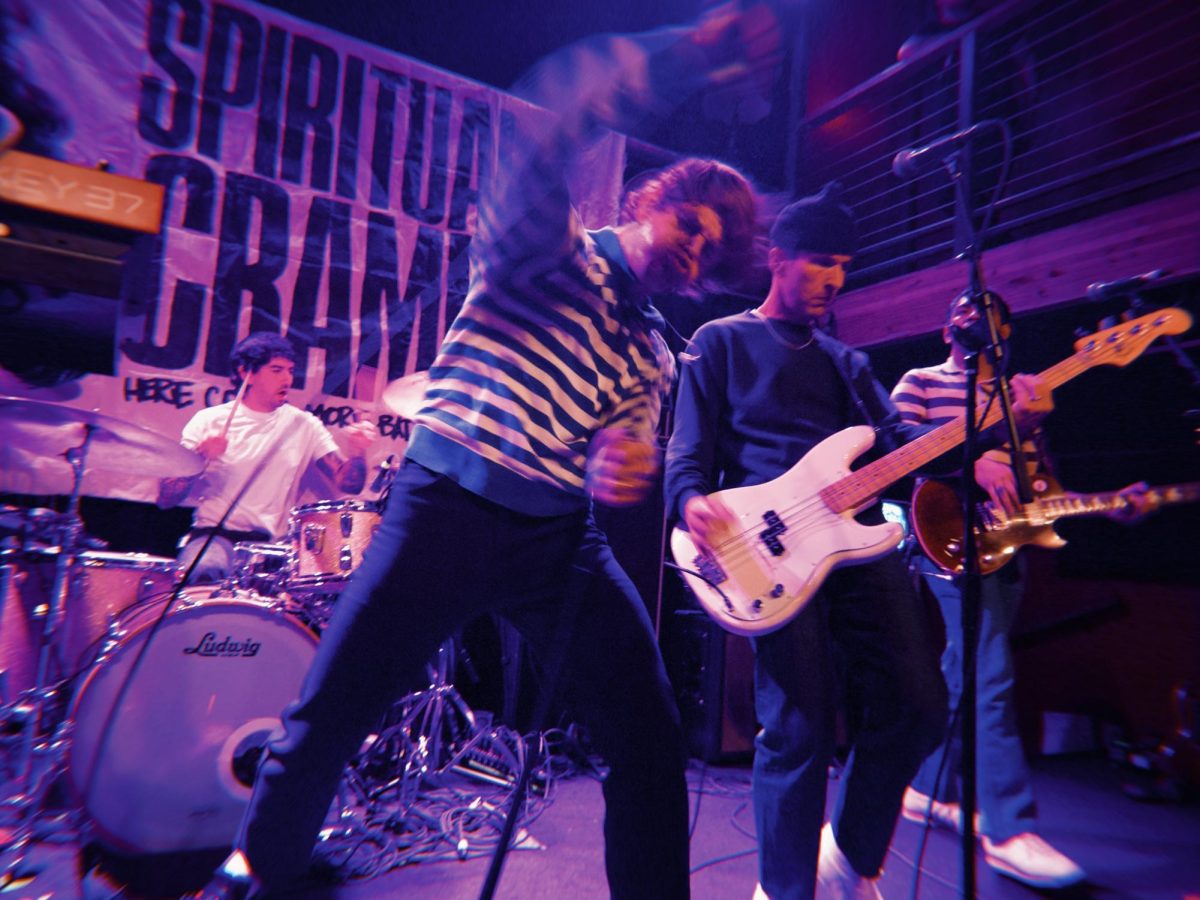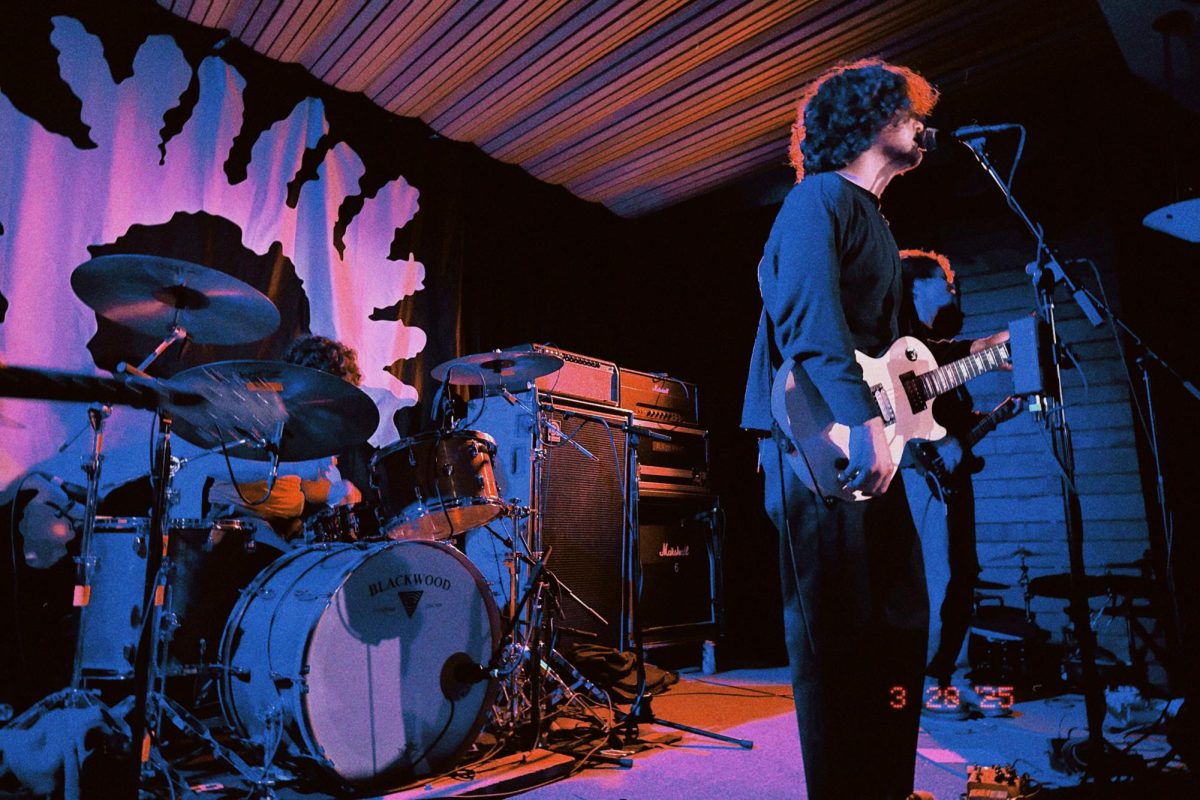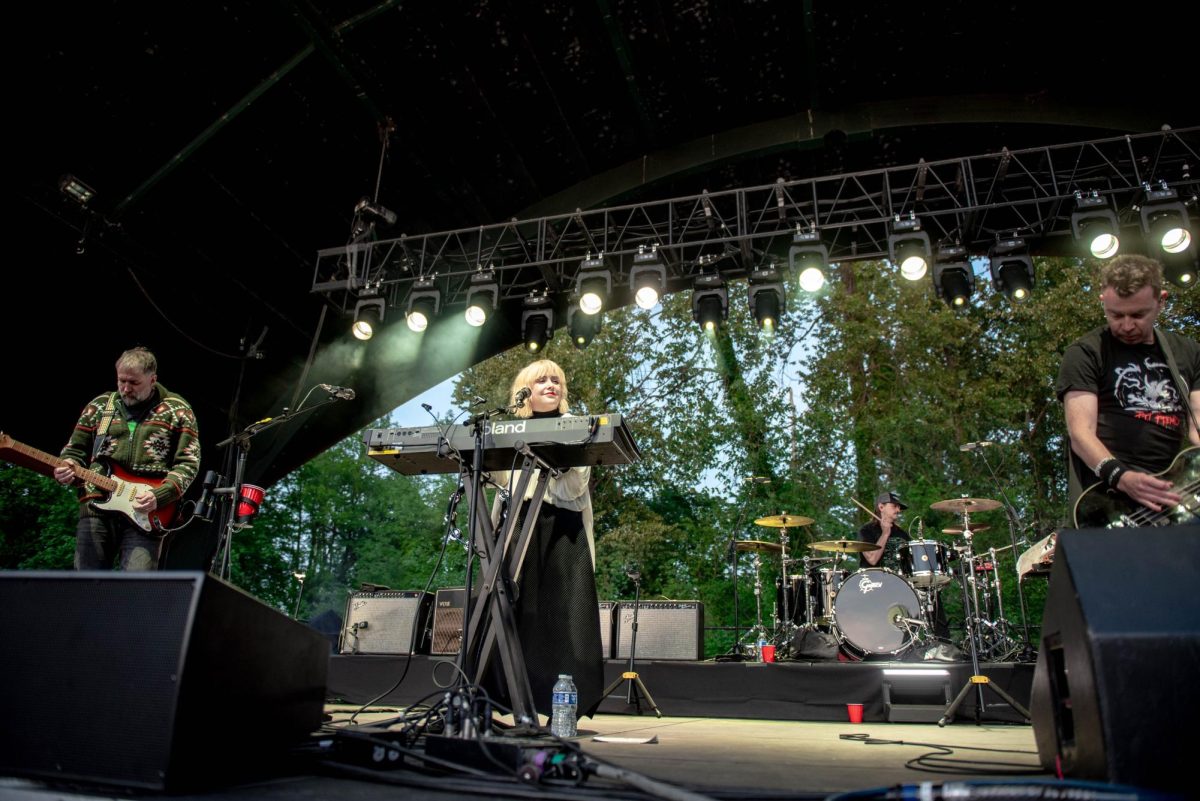Note – The following is excerpted from the journal of Denny Miles, KBVR’s first Sports Director in 1965.
When I attended Pacific Lutheran University, they were talking about having a campus radio station KPLU-FM. Nothing happened while I was there. It didn’t go on the air until November 1966, the year after I left campus. It ended up being a large powerful station, with few opportunities for student involvement.
I took every speech class I could at PLU because I have some native abilities in that. But none of the courses included broadcasting as such of any sort.
By the fall of 1965, I had transferred from PLU to Oregon State University. It was a fortuitous move, even a noteworthy watershed moment in my life. It became my first real exposure to broadcasting.
When I got to campus as a science major, I decided I needed to limit myself to a single extracurricular activity. I sought out one activity that I would enjoy and where I could make a real contribution.
I narrowed it down to two possibilities: Luther House, the OSU Lutheran campus ministry organization, and a proposed campus radio station KBVR-FM. I had a background that would fit the Lutheran campus group and it might be a good place to meet ladies. The radio station was scheduled to go on the air that fall. I was already technically a college senior although because of credit transfers, I figured it would take me more than one more year to get my degree. Luther House already had their leadership in place and even with my senior class standing I would just be one of the guys and likely not be able to employ any potential leadership skills in a meaningful way. On the other hand, KBVR was just getting started.
Every student would be joining the activity with the same level of seniority. Based on my prospects of really being involved with the radio station, I went to a KBVR organizing meeting at Shepard Hall on the OSU campus.
A Speech by Ancil Payne
As we were setting up the organizational chart, but before KBVR radio actually went on the air, I went to hear a speech in Portland — a speech that was another pivotal life benchmark, an event that changed my life. I attended an Intercollegiate Broadcasting System gathering in Portland along with my friend Boyd Levet. Most of the meeting was on the Lewis & Clark College campus near their campus radio station studio. Lewis & Clark operated a “carrier current” campus radio station. Their radio signal was embedded as a sub-carrier on campus power lines. Once a radio receiver was more than a few feet away from a campus power source, or physically not plugged into a campus outlet, there was no signal. OSU was going to have a “real over the airwaves radio station,” albeit with a very low power of only 10 watts. Our FM station wasn’t going to travel that far from the transmitter but it would at least get beyond the power grid of campus.
Boyd and I were sent to the Portland meeting by this budding student activity group with the understanding that we would share what we learned with others when we returned to campus. They recorded all the presentations and we purchased copies of the reel-to-reel tapes to share.
That meeting’s program included a featured luncheon speech by King Broadcasting’s top executive Ancil Payne. Payne had just been sent down from corporate headquarters in Seattle to be both a corporate vice president and general manager of KGW properties in Portland. These properties were owned by the Bullitt family of King County Washington and included a Portland television station, AM radio station, FM radio station and a magazine.
Payne was born in the extremely rural community of Mitchell, Oregon and raised in the slightly less rural town of The Dalles, Oregon. He had worked for the family that owned King Broadcasting since 1959. He understood the business and he accorded volumes of genuine charisma to everything he did, including this presentation to college broadcasting students.
He spoke about a lot of things over lunch at the old Anchorage Restaurant on the east bank of the Willamette River near the Sellwood Bridge. He encouraged investigative journalism. He spoke about the grand future he saw in broadcasting. Then he gave some advice that seemed at the time to be directed personally at me.
“If I were in campus broadcasting today, I’d do a lot of play-by-play broadcasts. I’d do play-by- play of everything, freshman games, heck I’d do play-by-play of chess matches. I don’t even care if you are broadcasting into a tape recorder and not on the air. You can only learn play-by-play by doing play-by-play.
You see, someday many of you will be looking for your first job in broadcasting and that first job will likely be in some rural small town. Anyone can ‘rip and read’ the UPI newswire and spin records. If they can’t do those things the station will be willing to quickly teach them to a new employee.
But the one thing that every small-market radio station needs and the one thing they won’t be willing to let you learn on the job, over their airwaves, is play-by-play broadcasting of the local Friday-night high school games.” (emphasis added)
He went on to have us visualize a small-market station manager sorting through a pile of resumes and audition tapes, a process he had done many times before. “Those applications that include budding broadcast journalists with some real play-by-play examples on their audition tape will have a leg up on everyone else in that pile of applications.”
His message resonated with me. Yes, I was a science major, who thought he might someday be a teacher; but being a sportscaster was an exciting thought. Duff Holt was already lined up to be KBVR’s first station manager. On the drive home, Boyd said that as a result of what we learned at the conference he wanted to be KBVR news director. I lobbied for the sports director position, vowing to focus on play-by-play broadcasting. Based on what we learned in that Portland conference, we both expressed an exciting vision for the news and sports departments. We both got the student jobs we wanted.
The sports department wasn’t formally organized when KBVR went on the air from studios on the second floor of Shepard Hall in that fall of 1965 (October 27, 1965). I was involved in that opening night, but not physically in the studio. My assignment was to use my Honda 90 motorcycle and a portable FM radio, to see how far our signal reached. Our signal wasn’t that great because the results were disappointing.
Engineers later tweaked things a bit and we ended up covering all of campus, downtown Corvallis and the fraternity and sorority areas north of campus. Initially we were on the air for just an hour each night, from 6 to 7 p.m.
Each person responsible for being on the air was required to obtain a Third-Class Federal Communications License. As I recall, this was really just a formality with no really difficult testing by the FCC. But with that license, you could be on the air.
The 10-watt FM transmitter was physically about 3 feet by 3 feet by 2 feet deep in size and was mounted on a metal pedestal rack right in the master control room of the Shepard Hall second floor studio. An antenna lead ran over some roofs to an antenna on the top of an engineering building. The big meters on the transmitter had to be read by a First-Class FCC license holder, referred to as a “first phone,” making sure we were set at the right power levels, transmitting on frequency and such. The initial FM frequency in 1965 was 90.1 MHz.
Play-by-Play
By the winter sports season the KBVR sports department was under my leadership and fully organized with several dozen student broadcasters. We focused our play-by-play efforts on basketball. Even though we were just a 10-watt training station, the OSU Athletic Department was not about to let us to do varsity basketball games. Commercial stations had a written contract for those rights, with Bob Blackburn as the “Voice of the Beavers” broadcasting on a regional network anchored by 1190 KEX in Portland. We pushed and were given permission to broadcast Rook (freshman) basketball games. In those days all freshmen played on a separate team with their own coach and game schedule. Games typically were played just in advance of the varsity games, as the crowd gathered for the “real contest.”
KOAC, was and is the legacy educational broadcasting radio station in Oregon, one of the very first educational broadcasting stations in the country. In 1922 it used the call letters KFBJ. In 1925 it got the KOAC call letters for Oregon Agricultural College. When I arrived on campus in 1965, KOAC was a 5000- watt directional AM station, broadcasting on 550 kHz. Their primary studios were in Covell Hall, a complex of engineering buildings, very near the Shepherd Hall studios of KBVR. KOAC-TV was on Channel 7 and had studios on the second floor of Gill Coliseum.
KOAC also had a legacy hard-wired connection through the campus steam tunnels to the press box in Gill Coliseum. This important pair of copper wires went back to the years when that AM campus station was the only one to broadcast basketball games. Soon our engineers had tossed another line between the roofs of our two campus buildings and KBVR had a hard-wire link to the basketball facility.
Bob Blackburn
Gill Coliseum’s press box was at the very top of the student seating section on the north side of the building. It was a long way away from the action. Today, basketball play-by-play sportscasters like to be right on the floor or perhaps elevated just a bit, but not too far away. There were three sections to this press box and Bob Blackburn had exclusive access to two of them. KBVR was fortunate to have one of the sections on the far west end of the space.
Bob Blackburn was very kind to us. He shared his method of keeping basketball statistics and I even had a couple of chances to keep statistics for him for the regular OSU basketball games. Blackburn was a great radio play-by-play sportscaster. He did have a physical tick of jerking his head at random times, essentially preventing him from ever moving to television. It was never noticeable on radio.
OSU Giant Killers of 1967
I learned a lot from Bob Blackburn, but one of his tips really stuck with me. It spawns a notable story. He always had a microphone hanging from outside the press box to pick up crowd noise. He taught us that while in radio play-by-play, compared to television, you did have to describe things in more detail, still at times it was better to “keep your mouth shut and let the crowd tell the story.”
That didn’t mean much to me until the fall football season after I graduated. On Saturday November 11, 1967 I was responsible for play-by-play broadcasts on KSRV in Ontario, Oregon. I called the local Treasure Valley Community College vs. Oregon State University Rook (freshman) football game live.
KSRV carried the OSU Beavers football games that year, but the contract with TVCC gave them the priority to be live. We taped the full OSU vs. USC game for later broadcast. That year Dee Andros coached a team that became known as the “Giant Killers.” It was to be a huge game for the Beavers, playing the number one team in the nation, featuring their star running back O.J. Simpson. I saved the tape.
The story of this game has been told thousands of times. My purpose in adding my quick review is the play-by-play lesson learned from mentor Bob Blackburn.
It was raining hard in Corvallis that day and Parker Stadium’s grass-turf field quickly turned into slippery mess. But according to pictures of the game, it was not the “mud bowl” as some would later claim. O.J. would rack up an incredible 188 yards, but he never scored. Bill “Earthquake” Enyart was OSU’s star fullback. His short yardage style was more suitable to the wet field conditions. The game play was as sloppy as the field, with many fumbles. With just five minutes to go in the first half, a Mike Haggard field goal gave OSU a 3-0 lead that no one thought would hold up given O.J.’s running prowess.
Late in the fourth quarter O.J. fumbled and OSU defensive tackle Jess Lewis recovered the ball. OSU was having a terrible second half without a single first down. Their only path to a huge upset win was for the offense to make some first downs. After the Lewis fumble recovery, they did just that. The game came down to OSU going for it on fourth down and short with time running out.
Bob Blackburn set the stage for his audience. “If they get a first down, they can run out the clock.” If the Beavers failed, USC would have the ball and a chance to tie or win in the closing seconds.
The Beavers called on their star running back Bill “Earthquake” Enyart. The big back hit the right side of the line. It was going to be close. “They’re calling in the chains for the measurement,” Blackburn described. “Beaver fans you will know if it is a first down, by the hometown crowd reaction.”
The crowd of 41,194 might have cheered themselves out. The official capacity of Parker Stadium that day was 40,750 and in years to come, additional hundreds of thousands of Beaver fans would claim to have physically been at the game. I was busy broadcasting the local community college game at the time, so this story comes from listening to the tape.
Blackburn went silent for what seemed like a full 30 seconds as the measurement was made. The crowd was hushed waiting for the official’s call. Suddenly the crowd noise increased, louder and louder, eventually to a roar. Bob Blackburn didn’t say a word. He let the cheering tell the story for another ten or more seconds, finally saying, “Coach Dee Andros on the far side of the field goes wild as it is first and ten for the Beavers.”
What an elegant call. Later that year Bob Blackburn headed to Seattle for a long career of broadcasting Seattle Supersonics NBA basketball franchise. I kept the game tape and eventually sent it to him with a letter thanking him for his advice and noting how deftly he made that call. I got a nice note of thanks saying that while he had a lot of tape, somehow that big game was not in his collection. Many years
later a local Corvallis radio station did a complete replay of the 1967 “Giant Killers” USC game using a “tape generously provided by former sportscaster Bob Blackburn.” I am certain it was the very same tape we had recorded at KSRV on that historic day.
Bob Blackburn died in the Seattle area on January 8, 2010 of pneumonia. He was 85.
“How Many Press Passes?”
When evaluated at the lowly student-broadcaster level, I was “good” at play-by-play. I seemed to have some natural but unpolished talent in this area. But I was sports director of the station and my idea was to involve as many students as possible so everyone could get some experience. We would have at least two play-by-play people along with color commentators at each game. Other announcers would read “commercials,” which in our case were public service announcements. Numerous others served as engineers, statisticians, cable pullers and more. I was promoting broad student participation.
Johnny Eggers was OSU’s sports information director. He had a large second floor office on the north side of Gill Coliseum. I dealt with him when KBVR got permission to do Rook basketball games.
Well before the first game of the year, I visited him to request media passes for my student crew. His jaw dropped and he nearly lost his ever-present pipe, when I told him how many “press box passes” I would need for the game. He thought I was just letting a lot of my friends into the game. I had to give him a list of all the students and their specific assignments.
For the first couple of games, Eggers would make the long trek up to the press box just to check and see if we were all involved. We had a well-staffed crew. After that, Johnny Eggers was always supportive of KBVR sports broadcasting.
The ‘Dads Weekend’ Surprise
My father was aware I was involved with the campus radio station. He assumed, because of the things he had taught me in our basement, I would be responsible for more of the technical side of the operation. For example, he saw me build a small FM transmitter from a kit so we could have “courtside” reporting during the games.
Then came Dad’s Weekend. Oregon State is where he went to school, so participation in the Corvallis
Dad’s Weekend event was a natural for him.
KBVR student sports staff who had dads on campus brought them to the basketball game. Fathers, including my dad, watched us set up the portable control boards, microphones and ear phones. As the first half of the freshman game began, I was responsible for being broadcast engineer controlling various audio levels. That’s the kind of work assignment my dad expected of me.
Then for the second half it was my turn to call the play-by- play. It takes a lot of focus to do a good job of calling a basketball game so I didn’t really look at my dad until the first timeout. He was sitting with other dads on a little balcony to the right side of the press box. He was looking at me, not necessarily smiling, just sort of staring at me. He acknowledged later that he had no idea I would be doing on- air talent work. This was something that had not come from him as part of my training as his son. I had learned how to build a radio from him, but not how to talk on the radio.
Now I was not only talking on the radio, I was doing demanding radio play-by-play sportscasting. He acknowledged he was proud of me that evening.
Just as Ancil Payne had suggested, at KBVR Sports we did play-by-play of everything we could. KOAC had another legacy copper line to the baseball field near the track. In the “middle of the night” we ran an extension of that line a few hundred feet over to the OSU track facility. Somehow, we got scaffolding loaned to us and from our “broadcast tower” we did a complete broadcast of a big track meet where Dick Fosbury flopped his way to a new high jump record.
Together with my friend Rod Chandler we did a music and “comedy” radio show once a week. He was much better at this and eventually went on to a career in broadcasting and elective politics.
A year after going on the air, KBVR had a strong news operation. With Boyd Levet at the anchor desk, KBVR produced election-night coverage for the November 8, 1966 general election night. They sent me to Portland with the station’s Uher tape recorder. I circulated around “victory” parties, gathered audio and called in reports via phone booths.
The OSU Broadcast Media Division academic unit would not exist formally until after I graduated from OSU. There were very few speech department broadcasting classes to take. A small committed cadre of us took them all.
When I became a fifth-year senior student, some of us lobbied several professors to create special broadcasting classes just for us. Dr. Harold Livingston ran the educational television operation in Kidder Hall. The OSU catalog included some generic upper-division graduate-level class numbers set aside for things like reading and conference. We wanted Dr. Livingston to teach such a class to some of us advanced students. It was higher education at its best. Eager students lobbying a professor to create an advanced class — even outlining the syllabus.
“This is not going to be easy,” he said warning us that any 400-level class was basically graduate school work. We were ready for the challenge and we all got good grades. I only wish the earlier portion of my university education could have been as stimulating, inspiring and rewarding.
KOAC Work-Study Job
My federally-subsidized work-study student employment at OSU was almost exclusively for KOAC, mostly at the television station.
KOAC-TV broadcast on Channel 7, with a lot of simulcasting on Portland’s KOAP. When I was at OSU, their studios were on the second floor, at the northeast corner of Gill Coliseum. Bill Smith had been with KOAC for a long time and successfully made the transition from radio only, to radio and television. He had a weekly agriculture show on television that was a full Corvallis TV studio live broadcast.
I was the floor director (some call it floor manager) stationed on the studio floor, but in communication with the director and producer in the control booth. This booth really didn’t have a direct view of the floor, except through the cameras.
The floor director was the eyes, ears and designated manager on the studio floor, acting on behalf of the real director in the booth. The floor director wears a headset that shares an intercom connection between the booth, the camera operators, the switching technical director and others. The talent, in those days, did not have such communication. Communication from the director to the on-air talent was my job.
In the 1960s this was all done using the floor director and hand signals. I kept the talent informed as to which camera was on, which camera was about to come on, how much time was left, to go slower or speed up; just about anything the producer and director needed to communicate to the show talent.
It was fast paced and demanding — exactly the kind of thing I enjoyed so much. Bill Smith was a real professional and he demanded sharp floor directing. I also worked as a floor director for KOAC’s television coverage of OSU graduation and other locally produced shows. This work-study job was a way for me to develop a relationship with KOAC staff and learn a lot about television production. This professional experience was invaluable.
Soon after I graduated from OSU, the television operation moved entirely to Oregon Public Broadcasting studios in Portland. Later, the radio station was merged with KOPB and was also moved to Portland, with only the transmitter and antenna towers staying in Corvallis.
————
About Denny Miles
Denny Miles graduated from Oregon State University in 1967 with a BS in Science. His first job after college was as sports director and assistant news director for KSRV Radio, in the far eastern Oregon town of Ontario. His play-by-play responsibilities included local high school contests and all home and away football games for the nationally ranked Treasure Valley Community College “Chukars.”
In 1971, Miles returned to OSU as a member of the faculty. He was assistant director of the OSU Department of Information, responsible for external broadcast media public information and public relations. He created a pioneering film news release program, providing 16mm film and stories of highly-visual OSU research stories to Oregon TV stations. He also created and taught three academic cinematography classes on campus. Miles was the faculty chair of the campus committee that guided the design of the Snell Hall KBVR radio and television studios.
Miles went on to serve as a senior aide and press secretary for Oregon Governor Vic Atiyeh (1979-1987). He was communications director for Atiyeh’s 1978 primary campaign, and managed the governor’s successful 1982 reelection campaign.
After a stint working in the Nebraska governor’s office and the United States Senate in Washington D.C., Miles returned to Oregon and formed the consulting firm Miles & Associates, doing political campaign, public relations, presentation coaching and crisis management consulting for the next 30 years.
His association with Oregon State continued with many years of service on the OSU Alumni Association board of directors, executive committee, and a term as president of the association. His term of service coincided with the successful capital campaign, and construction of the
CH2M-Hill OSU Alumni Center.
He is now retired and living in Salem, Oregon.
